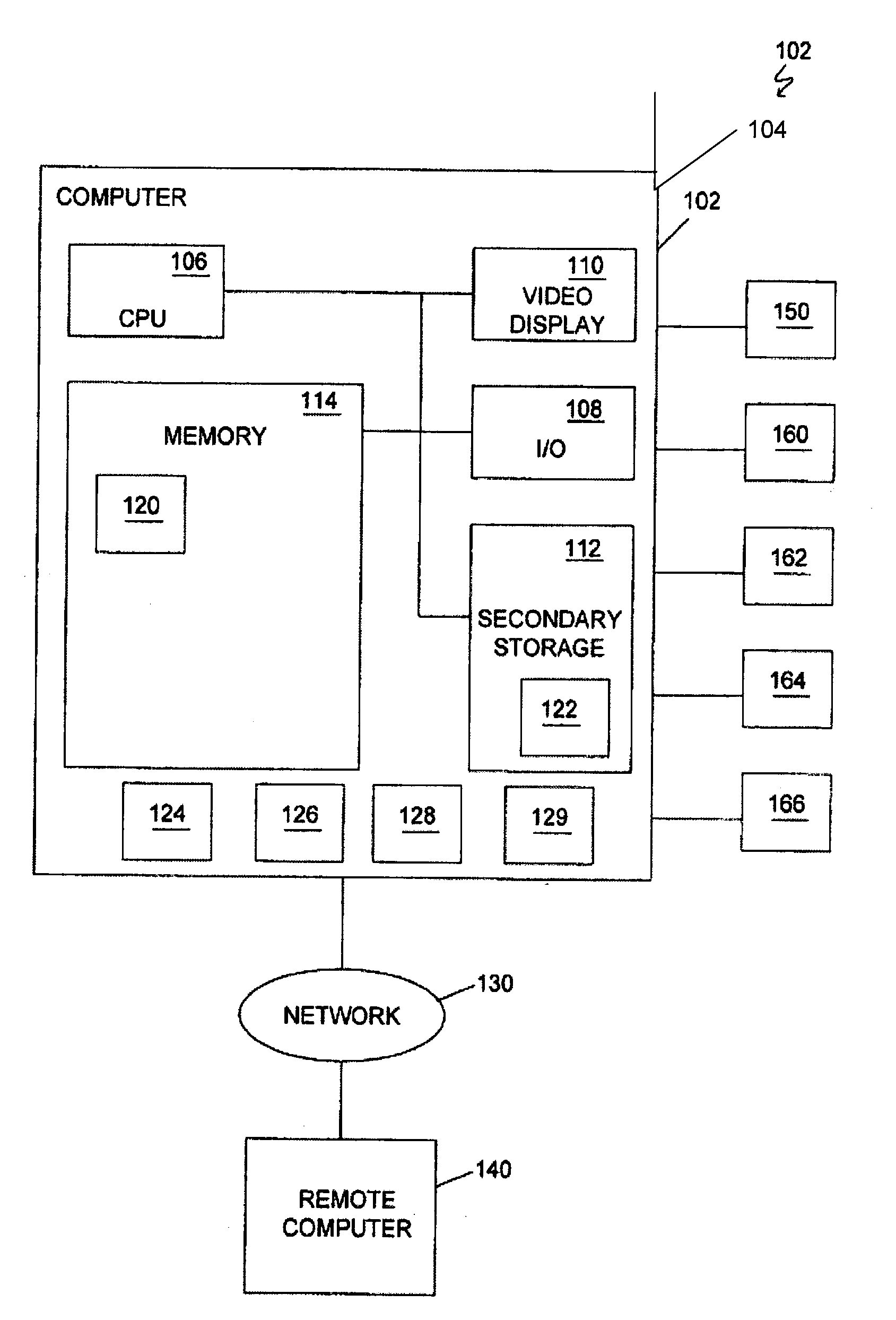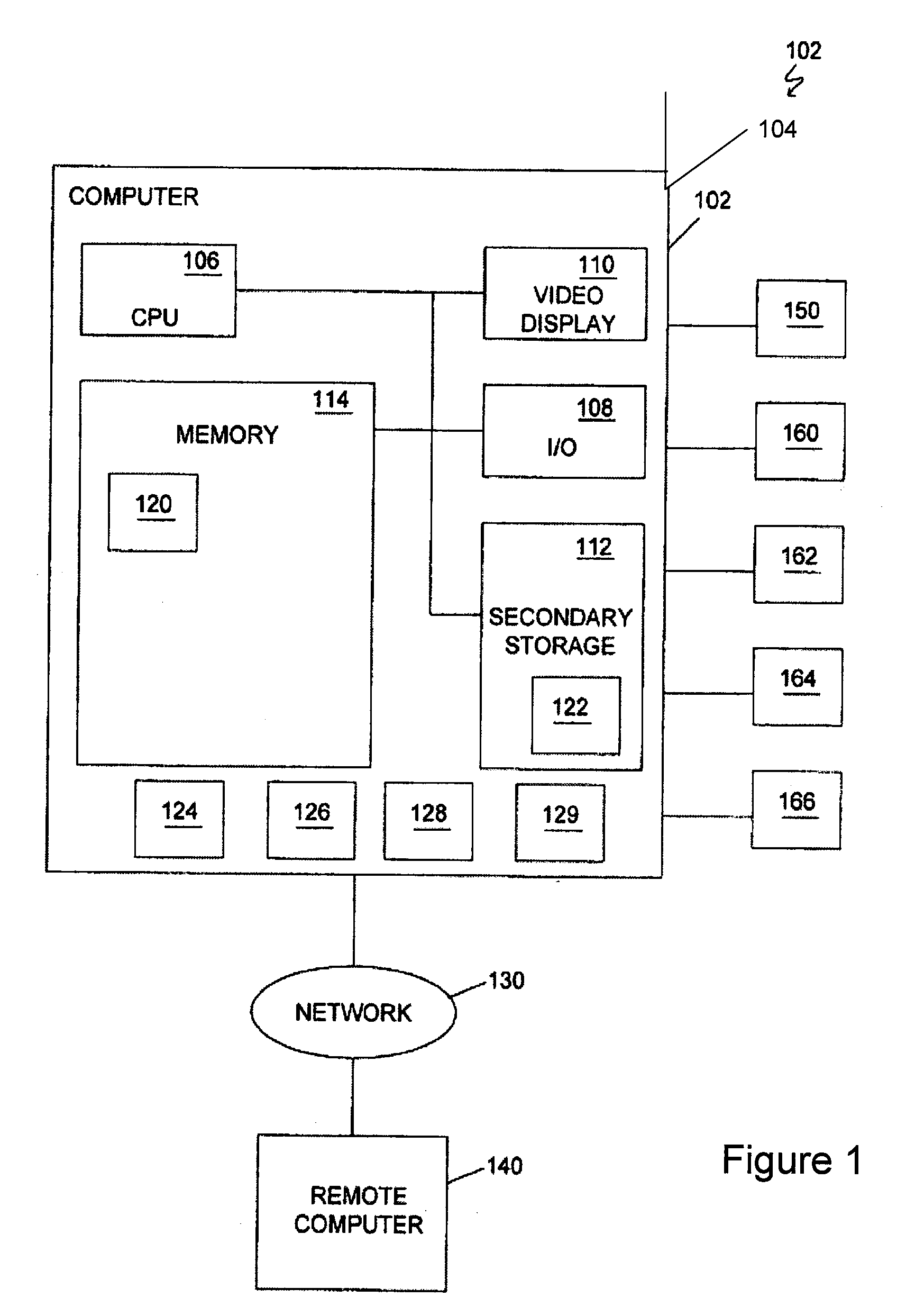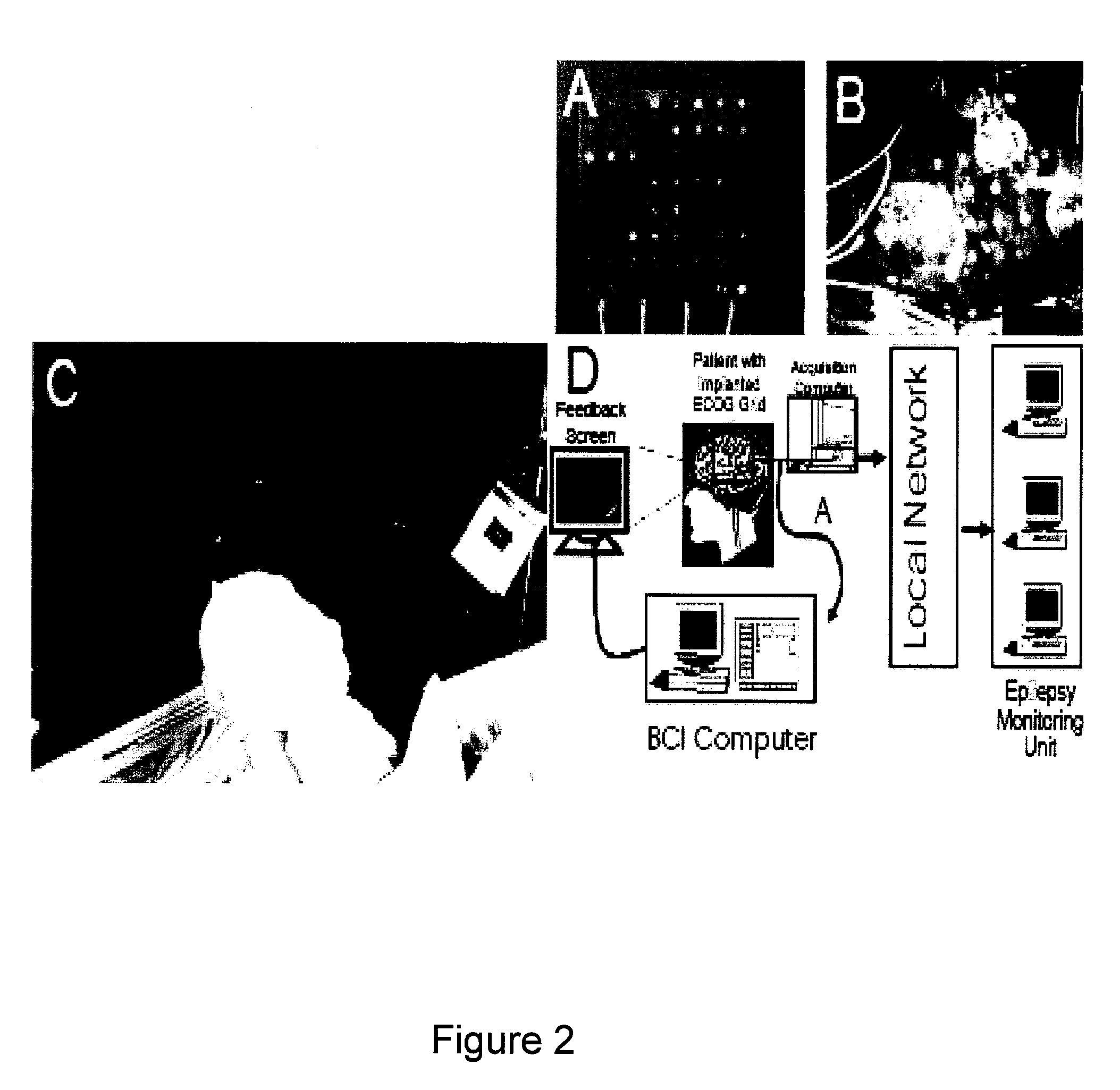Methods and systems for controlling body parts and devices using ipsilateral motor cortex and motor related cortex
a technology of ipsilateral motor cortex and motor related cortex, applied in the field of neurosurgical treatment, can solve the problems of inability to control the hand function of subjects with hemispheric stroke, the financial cost of lifetime care for u.s. subjects is typically prohibitive, and the opposite side of the body is typically left paralyzed or weak
- Summary
- Abstract
- Description
- Claims
- Application Information
AI Technical Summary
Benefits of technology
Problems solved by technology
Method used
Image
Examples
Embodiment Construction
[0032]Reference will now be made in detail to an implementation consistent with the present invention as illustrated in the accompanying drawings. Wherever possible, the same reference numbers will be used throughout the drawings and the following description to refer to the same or like parts. As would be understood to one of ordinary skill in the art, certain components or elements are not shown in the figures or specifically noted herein to avoid obscuring the invention.
[0033]Conventional brain computer interfaces (BCIs) have typically offered minimal benefit to subjects with motor impairment due to, for example, unilateral stroke because conventional platforms or systems rely on signals derived from the contralateral motor cortex, which is the same region injured by the stroke or other impairment. For a BCI to assist a hemiparetic subject, the unaffected cortex ipsilateral to the affected limb (opposite the side of the stroke) needs to be utilized. The affected limb or body part...
PUM
 Login to View More
Login to View More Abstract
Description
Claims
Application Information
 Login to View More
Login to View More - R&D
- Intellectual Property
- Life Sciences
- Materials
- Tech Scout
- Unparalleled Data Quality
- Higher Quality Content
- 60% Fewer Hallucinations
Browse by: Latest US Patents, China's latest patents, Technical Efficacy Thesaurus, Application Domain, Technology Topic, Popular Technical Reports.
© 2025 PatSnap. All rights reserved.Legal|Privacy policy|Modern Slavery Act Transparency Statement|Sitemap|About US| Contact US: help@patsnap.com



